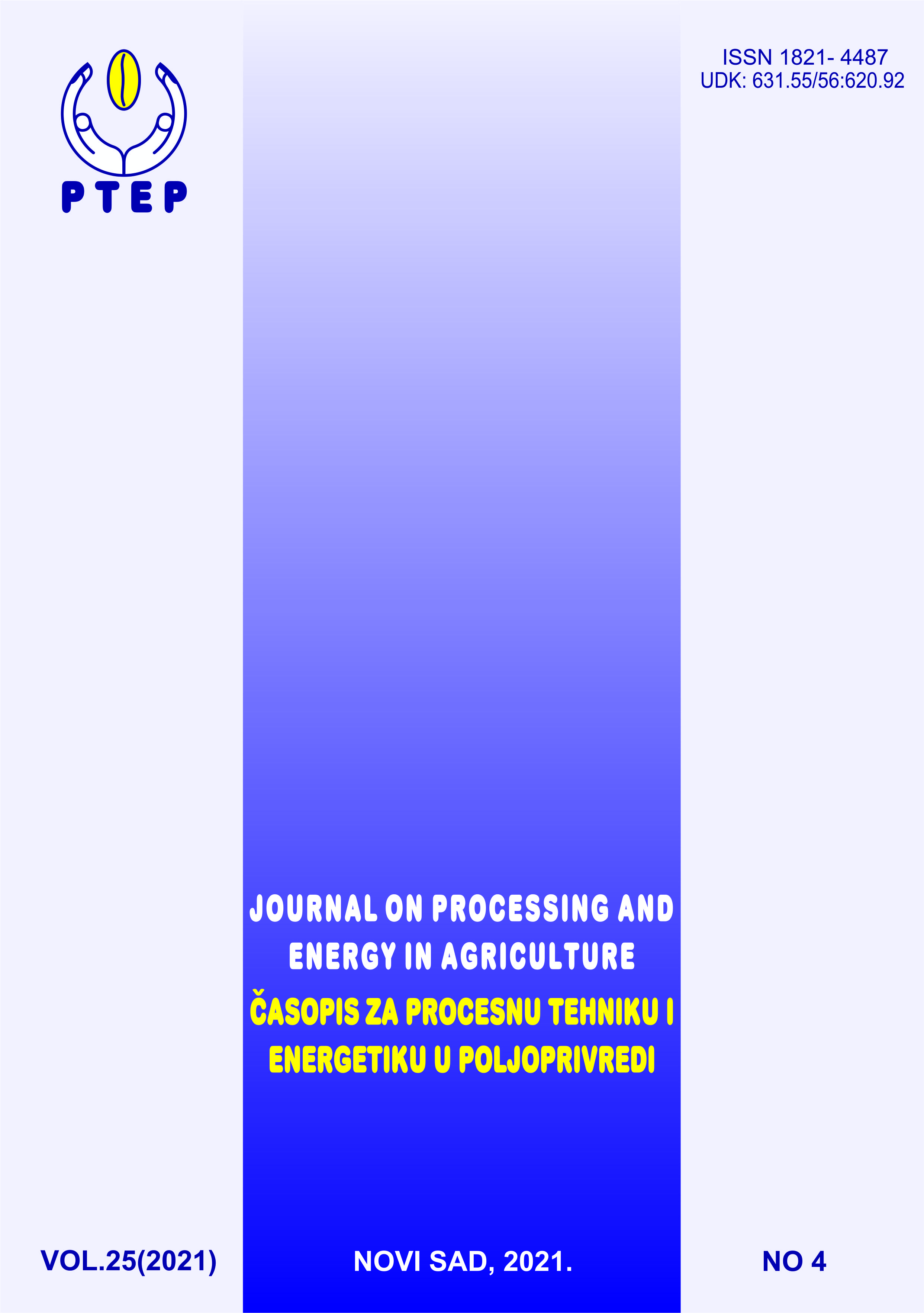RESONATOR-BASED METERING OF POWER COMPONENTS ACCORDING TO IEEE STANDARD 1459-2010
Abstract
This paper proposes an accurate and computationally efficient implementation of the IEEE Std. 1459-2010 for power measurements. An implementation is based on digital resonators embedded in a feedback loop. In the first algorithm stage, the unknown signal harmonic parameters are estimated. By this, the voltage and current signals are processed independently on each other. In the second algorithm stage, the unknown power components are estimated (calculated) from based on estimated spectra. To demonstrate the performance of the developed algorithm, computer simulated data and laboratory testing records are processed. Simple LabView implementation, based on point-by-point processing feature, demonstrates techniques modest computation requirements and confirms that the proposed algorithm is suitable for real–time applications.
References
Cataliotti, A., Cosentino, V., Lipari, A., & Nuccio, S. (2009). Metrological characterization and operating principle identification of static meters for reactive energy: An experimental approach under nonsinusoidal test conditions. IEEE Transactions on Instrumentation and Measurement, 58(5). https://doi.org/10.1109/TIM.2008.2009134
Cataliotti, A., Cosentino, V., & Nuccio, S. (2008). A virtual instrument for the measurement of IEEE Std. 1459-2000 power quantities. IEEE Transactions on Instrumentation and Measurement, 57(1). https://doi.org/10.1109/TIM.2007.908625
Chen, C. I. (2013). A two-stage solution procedure for digital power metering according to IEEE standard 1459-2010 in single-phase system. IEEE Transactions on Industrial Electronics, 60(12). https://doi.org/10.1109/TIE.2012.2228146
Emanuel, A. E. (2010). Power Definitions and the Physical Mechanism of Power Flow. In Power Definitions and the Physical Mechanism of Power Flow. https://doi.org/10.1002/9780470667149
Emanuel, A. E., & Milanez, D. L. (2006). Clarke’s alpha, beta, and zero components: A possible approach for the conceptual design of instrumentation compatible with IEEE Std. 1459-2000. IEEE Transactions on Instrumentation and Measurement, 55(6), 2088–2095. https://doi.org/10.1109/TIM.2006.884125
Gherasim, C., van den Keybus, J., Driesen, J., & Belmans, R. (2004). DSP implementation of power measurements according to the IEEE trial-use Standard 1459. IEEE Transactions on Instrumentation and Measurement, 53(4), 1086–1092. https://doi.org/10.1109/TIM.2004.831509
Hostetter, G. H. (1980). Recursive Discrete Fourier Transformation. IEEE Transactions on Acoustics, Speech, and Signal Processing, 28(2). https://doi.org/10.1109/TASSP.1980.1163389
IEEE Std 1459-2010, 40 IEEE Std 1459-2010 (Revision of IEEE Std 1459-2000) (2010).
IJ, J. E., & S Loureiro, O. (2015). Research and Development of a Virtual Instrument for Measurement, Analysis and Monitoring of the Power Quality. Journal of Fundamentals of Renewable Energy and Applications, 05(05). https://doi.org/10.4172/2090-4541.1000185
International Electrotechnical Commission. (2003). Electromagnetic compatibility (EMC) Part 4-30: Testing and measurement techniques Power quality measurement methods. IEC Standard, 61000-4–30.
Kehtarnavaz, N., & Kim, N. (2005). Digital Signal Processing System-Level Design Using LabVIEW. In Digital Signal Processing System-Level Design Using LabVIEW. https://doi.org/10.1016/B978-0-7506-7914-5.X5000-4
Kusljevic, M. D. (2010). Simultaneous frequency and harmonic magnitude estimation using decoupled modules and multirate sampling. IEEE Transactions on Instrumentation and Measurement, 59(4). https://doi.org/10.1109/TIM.2009.2031426
Kušljević, M. D., Tomić, J. J., & Jovanović, L. D. (2010). Frequency estimation of three-phase power system using weighted-least- square algorithm and adaptive FIR filtering. IEEE Transactions on Instrumentation and Measurement, 59(2). https://doi.org/10.1109/TIM.2009.2023816
Kusljevic, M. D., Tomic, J. J., & Poljak, P. D. (2017). Maximally Flat-Frequency-Response Multiple-Resonator-Based Harmonic Analysis. IEEE Transactions on Instrumentation and Measurement, 66(12), 3387–3398. https://doi.org/10.1109/TIM.2017.2751799
Lyons, R. G. (2014). Understanding Digital Signal Processing Third Edition. In Vascular (Issue January 2010).
Péceli, G. (1986). A Common Structure for Recursive Discrete Transforms. IEEE Transactions on Circuits and Systems, 33(10). https://doi.org/10.1109/TCS.1986.1085844
Pigazo, A., & Moreno, V. M. (2007). Accurate and computationally efficient implementation of the IEEE 1459-2000 standard in three-phase three-wire power systems. IEEE Transactions on Power Delivery, 22(2). https://doi.org/10.1109/TPWRD.2006.881576
Poljak, P. D., Kuljevíc, M. D., & Tomíc, J. J. (2012). Power components estimation according to IEEE standard 1459-2010 under wide-range frequency deviations. IEEE Transactions on Instrumentation and Measurement, 61(3). https://doi.org/10.1109/TIM.2011.2171615
Real-Time Tutorial. (n.d.). http://www.ni.com/realtime
Tan, L., & Jiang, J. (2018). Digital signal processing: Fundamentals and applications. In Digital Signal Processing: Fundamentals and Applications. https://doi.org/10.1016/C2017-0-02319-4
Terzija, V. v., Stanojević, V., Popov, M., & van der Sluis, L. (2007). Digital metering of power components according to IEEE standard 1459-2000 using the Newton-type algorithm. IEEE Transactions on Instrumentation and Measurement, 56(6). https://doi.org/10.1109/TIM.2007.908235
Tomic, J. J., Kusljevic, M. D., & Marcetic, D. P. (2010). An adaptive resonator-based method for power measurements according to the IEEE trial-use standard 1459-2000. IEEE Transactions on Instrumentation and Measurement, 59(2). https://doi.org/10.1109/TIM.2009.2020840
Tools, I. (2001). Getting Started with LabVIEW. Building.
Yang, J. Z., Yu, C. S., & Liu, C. W. (2005). A new method for power signal harmonic analysis. IEEE Transactions on Power Delivery, 20(2 II), 1235–1239. https://doi.org/10.1109/TPWRD.2004.834311

